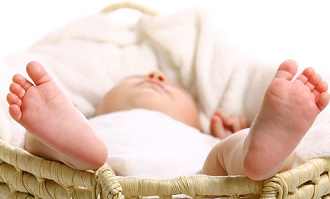Common orthopaedic "malformations" in newborns
When a new life is born, the intrauterine posture should last for a while, such as calf bending, foot varus or valgus, head and neck slightly inclined, spine flexion and other phenomena. Most of these phenomena will gradually improve and return to normal without special treatment. These phenomena are called "postural deformation". However, some "abnormalities" belong to congenital malformations, that is, they are structurally abnormal, and these abnormalities need to be identified or treated by a doctor. Here are some of the most common phenomena: trigger fingers or adduction fingers of newborn babies are constricted at birth, and will slowly loosen over time. At this time, some parents will notice the child's thumb bending or adduction. The fingers may also straighten up when you rub them or pull them with force. It is best to show this phenomenon to the doctor. Move the fingers more, wear a corrective stand, and a small part must receive surgery.
Backbone protrusion is more obvious when the newborn's body leans forward, because the newborn's body is soft. Don't worry. Sometimes the back of a baby seems to have a side bend due to its movement, but most of them are normal.
Abnormal sternum The sternum is especially prominent at the upper left and right sides of the abdomen. It seems that something pushes it out. This is due to the uneven development of cartilage, which is not a big problem. As for mild chicken breasts or pectus excavatum, they will not hinder the development of the body and do not need treatment. For more serious ones, they need to be observed after two years of age, and surgical correction is necessary.
The crooked neck is caused by intrauterine compression, and no treatment is needed. However, if there is a mass in the neck muscle, it is better to take physical therapy and continue to observe whether it will evolve into a true muscular torticollis. If so, it will need to be treated by surgery from 6 months to about one year old.
The phenomenon of hip dislocation is quite obvious in children with congenital hip dislocation, but it may also occur in normal newborns, so it is not necessary to be overly nervous. The child suffering from dislocation still has other phenomena such as rough noise in the hip and short legs. If necessary, a pediatric orthopedic physician can be asked to check. If there is dislocation, the above phenomenon will become more obvious. When learning to stand, it is more unstable and easy to fall.
Horseshoe foot is the same principle as lower leg bending. The foot may be in the position of turning inward or outward in the uterus. If the compression is severe, it looks very scary at birth. It is different from the pathological deformed foot. The person who causes the compression can straighten the foot with a little force. This "deformation" can slowly return to normal within a few months after birth, There will be no sequelae. On the contrary, the real deformed foot may need plaster correction, or even surgery.
Rickets, O-shaped legs or X-shaped legs are the most common physiological phenomenon of newborns, which will be more obvious when learning to stand or walk. Some parents make their own decisions. When they sleep at night, they tie their legs together with cloth strips, hoping to correct it. It's really unnecessary. The above situation will gradually improve after the age of two. Unless the "O" leg is particularly serious, or the legs are asymmetric, X-ray or blood sampling is required to find out whether there is rickets for further treatment. When children learn to stand, their feet spin outward (outward splay), which is normal.
After birth, if one of the limbs of the child with birth injury does not move much, check whether there is clavicle fracture or brachial plexus injury.
It can be seen from the above that the boundary between normal and abnormal is sometimes not so clear about children's growth and development, which requires professional knowledge to judge. Therefore, it is suggested that parents should go to the hospital for consultation or medical treatment as soon as possible when finding abnormal bone development in their children.
 Learn about parenting knowledge, watch parenting blogs and forums, and go to the parent-child channel baby.sina.cn
Learn about parenting knowledge, watch parenting blogs and forums, and go to the parent-child channel baby.sina.cn

![]()








